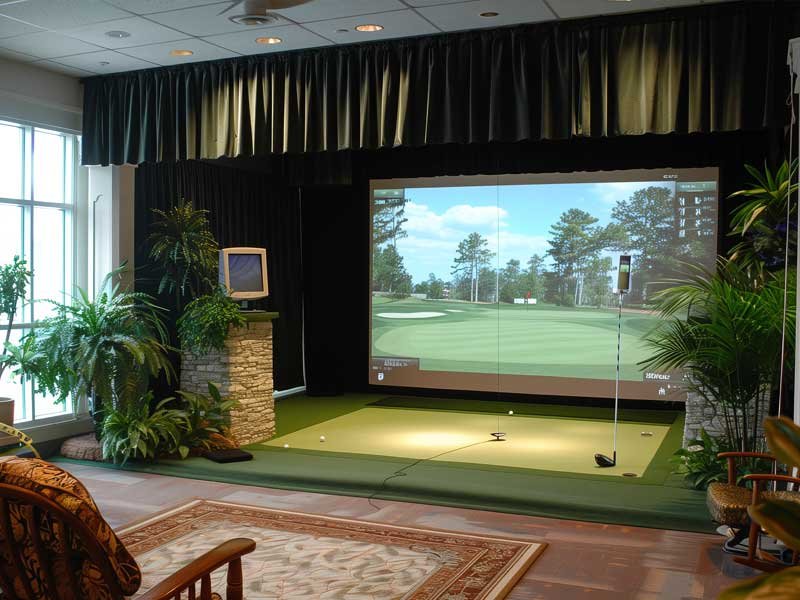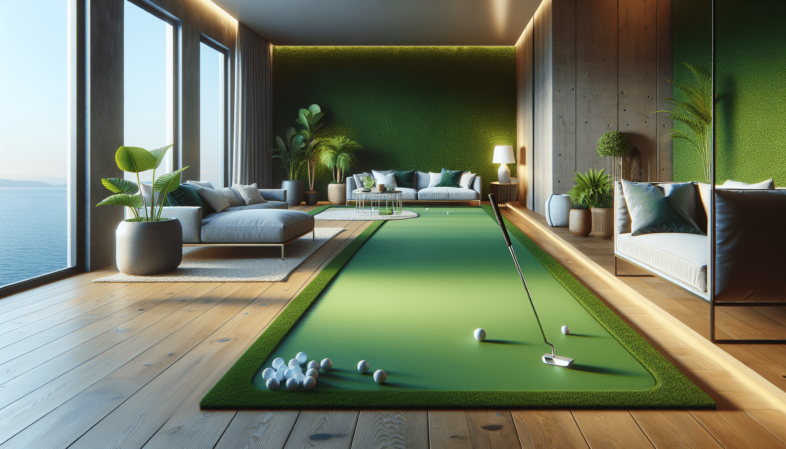Have you ever thought about having your own indoor putting green? Imagine the convenience of practicing your golf skills right at home! But before you roll out the turf, you might be wondering: how much space will you actually need for an indoor putting green?
Understanding Indoor Putting Greens
Indoor putting greens are a fantastic way to refine your short game, improve your focus, and bring a touch of golf to your home. They can range from small, portable mats to professionally installed synthetic grass setups filling entire rooms. The space required largely depends on how serious you are about your practice and the style of green you choose.
Putting Green Dimensions
When you think about the size of a putting green, the dimensions matter greatly. On average, most indoor putting greens are designed to mimic the layouts found on traditional golf courses.
Standard Sizes
| Type of Putting Green | Dimensions (Length x Width) |
|---|---|
| Mini Indoor Putting Mats | 3 ft x 10 ft |
| Intermediate Indoor Greens | 8 ft x 12 ft |
| Full-Scale Indoor Greens | 12 ft x 20 ft or larger |
For a casual experience, a mini indoor putting mat might be sufficient. However, if you want a more realistic experience, you might consider something larger.
Depth Considerations
In addition to length and width, consider the depth needed for the green itself. A typical indoor putting green should have a base that allows for drainage and stability, which usually requires an additional 1 to 3 inches depending on the materials used.
Factors Influencing Space Requirements
Several factors come into play when planning the dimensions of your putting green.
Available Space in Your Home
First and foremost, assess the available space in your home. Do you have an extra room, garage, or basement that could accommodate a putting green? The larger the area, the more options you have for layouts and features.
Goals of Your Practice
Next, think about your golfing goals. If you are striving to fine-tune your skill set, a larger green allows for more varied practice. However, if you just want to have fun and practice occasionally, a smaller setup can work as well.
Accessories and Features
Consider any additional features you might want to add. Are you thinking about incorporating sand traps or other hazards? Do you want to install putting holes for more precise practice? Depending on the features, you might need additional space.
Layout Options for Your Indoor Green
Once you determine how much space you can use, you can start planning the layout.
Rectangular Layout
A rectangular layout is the easiest and most common. This shape allows for straightforward practice and is more manageable in terms of installation.
L-Shaped Green
If you want something a little more creative and plan on using multiple angles, an L-shaped green can be a great option. This design can lead to a more challenging practice experience.
Multi-Hole Setup
For those looking to simulate an actual golf course more closely, a multi-hole setup allows you to place several holes on the same green, which can help with putting from various distances.
Ideal Locations for an Indoor Putting Green
Choosing the right location is vital for creating the perfect indoor putting green.
Spare Room
If you have a spare room, this is often the best option. You can have complete control over the environment, from lighting to temperature.
Basement
Basements can be a great alternative since they typically have ample space. Ensure you have proper ventilation and lighting.
Garage
Turning a portion of your garage into an indoor putting green can be a unique solution. Just make sure the area is clean and dry to maintain the quality of your turf.
Flooring Considerations
The type of flooring you have or plan to install can affect your indoor putting green.
Carpet
If you have carpet, it can work nicely but may affect the ball’s speed.
Hard Flooring
Hard surfaces such as tile or wood can provide a realistic putting experience since they don’t interfere with the ball’s movement as much.
Turf Base
If you’re laying down a turf green, ensure your base is level and stable.
Materials Needed for Installation
You can either professionally install an indoor putting green or do it yourself. Here are some essential materials you might need:
Turf
High-quality synthetic turf is essential for a realistic putting experience. Look for products that are designed to mimic the feel of grass while providing durability.
Base Material
Using crushed stone or sand can create a strong base for your indoor putting green. This material aids in drainage and provides stability.
Glue and Adhesive
Depending on the design, you might need adhesive to hold the turf in place securely.
Cups and Flags
Your putting green wouldn’t be complete without proper cups and flags to aim for while practicing!

Maintenance Tips for Your Indoor Putting Green
Once you have your indoor putting green set up, you’ll want to maintain it properly.
Cleaning
Regularly vacuum or sweep the area to remove any debris or dust that may accumulate. This helps to keep the surface clean and the ball rolling smoothly.
Inspections
Conduct periodic inspections for any wear and tear. If you notice any damage, address it quickly to maintain the integrity of your putting surface.
Moisture Control
Depending on the materials used, you may need to monitor moisture levels to prevent mold or other issues. Make sure your green has proper drainage.
Additional Features to Consider
If you’re passionate about golf, you might want to take your indoor putting green a step further with additional features.
Lighting
Proper lighting can enhance your putting experience. LED lights can mimic natural daylight and help you practice effectively at any time.
Ball Return System
A ball return system can make practice easier by saving you from constantly retrieving your golf balls. This is especially useful if you plan to invite friends over for a friendly game.
Electronic Score Keeping
For those competitive spirits, consider incorporating electronic scorekeeping to track your progress and make practice sessions more fun.
Cost Estimation for Your Indoor Putting Green
Understanding the costs involved can help you plan your indoor putting green project better.
Budgeting for Materials
The cost of synthetic turf, base material, and necessary tools can vary widely. On average, you might spend between $1,500 and $4,000, depending on the quality and size of your green.
Installation Costs
If you choose to hire professionals for installation, this could significantly impact your budget. Expect to add another $1,000 to $3,000 for professional services.
Break Down of Costs
| Item | Estimated Cost |
|---|---|
| Synthetic Turf | $1,000 – $3,000 |
| Base Materials | $200 – $500 |
| Tools and Accessories | $100 – $300 |
| Professional Installation | $1,000 – $3,000 |
Conclusion
Creating your indoor putting green can be a rewarding project that enhances your golfing experience at home. Understanding how much space you’ll need, along with the associated costs and maintenance, helps you make informed decisions to ensure the best practice environment.
In the end, whether you opt for a cozy mat or a grand setup, having an indoor putting green can turn your home into a mini golf haven, making practice more accessible and fun! So, are you ready to make your golfing dreams come true?



